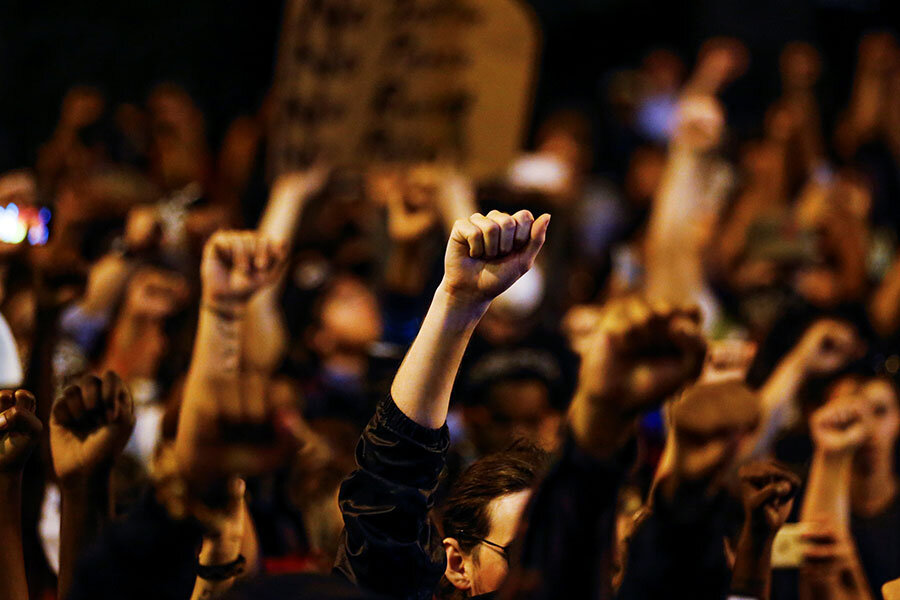Charlotte videos: Could they help to dispel fear and mistrust?
Loading...
The family of Keith Lamont Scott, a black man killed in a Charlotte, N.C., police shooting on Tuesday, have asked for videos of the incident to be made public.
The videos, taken by police body cameras, were shown to the family on Thursday. Justin Bamberg, their attorney, said the footage left the family with “more questions than answers.” On Thursday night, protesters called for the videos to be made available in the name of “justice for Keith.”
The video may not be able to provide the definitive version of events that the family and the police would like. However, having more such evidence available to the public may help to create a common framework for events, transparency advocates say. Even if viewers disagree on some of the details, even critical ones, they will still have some of the same background. And with multiple videos showing the same events, there is less chance that critical details will be excluded.
“The advent of video presents a perceptual reality that transcends the kind of he-said-she-said-they-said arguments. And in some ways, this can provide a common framing of events, so that, maybe in the long term, these different ways of viewing the world will converge a little bit,” Brad Reid, senior scholar at the Dean Institute for Corporate Governance and Integrity at Lipscomb University in Nashville, Tenn., told the Christian Science Monitor’s Harry Bruinius.
In this case, the footage provides evidence of the events around the shooting but does not settle one of the key points of contention between the police and the family's account of the incident.
The family had said that he was holding a book, while police had stated that Mr. Scott was carrying a gun. Upon viewing the video, however, both Bamberg and the police confirmed that it was impossible to see whether Scott was holding anything in his hands, according to The Charlotte Observer.
The family and the police came away from the viewing with very different takeaways from the video. Police say it appeared to indicate that the shooting was justified, while the family attorney Mr. Bamberg said it showed that said that Scott’s hands were by his side and that he was walking slowly backward at the moment when he was shot.
Still, in a tense climate where many Americans, especially in black communities, are deeply mistrustful of the police, the release of videos can help to foster transparency, observers say. As The Christian Science Monitor reported on Thursday, popular trust in institutions – across finance, politics and the media – is currently low. This low trust provokes fear, a fear that creates expectations of harm on both sides and can lead to greater conflict. The riots in Charlotte, where shops were looted and had their windows smashed by protesters, can be seen as an expression of that fear – and an inability to do anything to combat it.
“I understand the frustration, but rioting and damaging buildings doesn’t fix the problem,” Ryan McLeod, who was cleaning up glass outside the Charlotte Convention Center, told The Charlotte Observer.
The family has asked for the videos to be released “as a matter of the greater good and transparency,” perhaps in the hope that an understanding of these events may help to prevent similar tragedies in the future.
The police have asked that the footage not be made public: Police Chief Kerr Putney said that releasing the videos might affect a state investigation of the shooting, which was requested by Scott’s family.
Mostly peaceful protests dissipated early Friday morning, as police chose not to enforce the midnight-to-6am curfew imposed by authorities during the declared state of emergency.
This report contains material from Reuters and the Associated Press.








